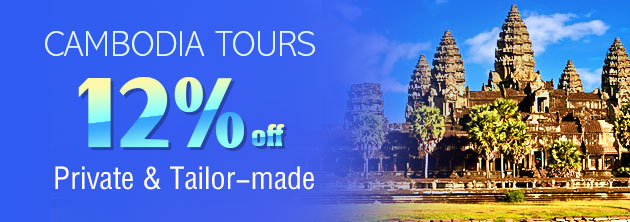5 Things You Need to Know about the Water Festival in Cambodia
When the full moon appears in the month of Kadeuk (the Khmer solar calendar’s eleventh month in Cambodia), you would know that it’s time to start the celebrations and festivities for the Water Festival.The Water Festival in Cambodia boasts of a very special place in the hearts and minds of the Cambodian people. If you don’t know much about this famous festival, then let this blog enlighten you. Over the course of this blog, we will learn about 5 things that you simply need to know about the Water Festival in Cambodia before you go to the country and experience it for yourself.
1. What’s the Water Festival in Cambodia All about?
Cambodia’s famous Water Festival is essentially about being thankful to the two main rivers of Cambodia: the Mekong and the Tonle Sap.The festival kicks off as the rainy season comes to an end. During the monsoons, both these rivers swell and contribute immensely to the cultivation of rice, the country’s staple food. As the monsoon draws to a close, the people express their gratitude to the river, with the Water Festival in Cambodia being symbolic of the people’s thankfulness.
The full moon seen at this time of the year is fondly referred to as the “Harvest Moon”, as it signals the end of monsoons and the arrival of a great harvest. This is the reason why the Water Festival also witnesses night time celebrations.
 Points to Remember
Points to Remember
• The Water Festival is an expression of Cambodia’s gratitude towards the Mekong and Tonle Sap rivers• The festival marks the end of the monsoons in the country.
• The full moon seen during the period of the festival is known as the “harvest moon”.
2. What are the Traditions of the Water Festival?
While the modern-day Water Festival celebrations are much grander than how they used to be many years ago, the essence of the festival has stayed pretty much the same.During the times when the mighty Angkor Empire was in control of the region, the Water Festival in Cambodia featured boat races, which are still prevalent today. Through these boat races, the empire used to showcase the strength of its naval forces, which were key in defending the empire from sea invasions.
Even though 2010 saw the festival turn into a horror show thanks to a stampede that sent almost 350 people to their deaths, the festival returned in 2014. After a three year absence, the festival came back with grander boat races for the scores of Cambodians to witness.
 Points to Remember
Points to Remember
• The Water Festival features boat races, which feature different Cambodian boats competing against each other.• This tradition dates back several centuries when the Angkor Empire showcased their strength on the seas during the festival through boat races.
3. What is the schedule of the Water Festival in Cambodia?
In today’s times, boat races are just one part of the Water Festival. The festival features many other activities and ceremonies that take place as the festival takes place across a three-day period.A ceremony called Bandaet Pratip takes place at 7:00 in the evening, which features numerous illuminated boats drifting downriver Tonle Sap. This ceremony is not just a feature of the grand spectacle that the capital Phnom Penh witnesses; it is also practiced in rural areas, where the people make their own boats.
After the Bandaet Pratip comes to an end, the festival features some of the most spectacular fireworks displays you are every likely to see.
The last day of the festival sees two significant ceremonies; the Sampeah Preah Khae and the Ak Ambok. For the first ceremony, people offer salutations to the “harvest moon” through offerings such as incense, food, and drink. For the second, people gather across the biggest pagodas and eat a mixture of fried rice, banana, and coconut at 12 o'clock in the night.
 Points to Remember
Points to Remember
• The Water Festival in Cambodia features several activities and ceremonies apart from the boat races.• Some significant ceremonies are Bandaet Pratip, Sampeah Preah Khae, and Ak Ambok
4. Who Makes the Boats for the Races and Who Rows Them?
The boats for the boat races don’t just appear magically for the Water Festival. They are painstakingly created from scratch each year by Cambodians.In the annual event in Phnom Penh, the boats are pitted against one another for the locals to see their respective speeds and strengths as they compete on the waters of the Mekong.
Every boat features between thirty and eighty men, who give it their all to row their respective boats to glory. Each boat also has a captain, who stays in tune with the rhythm of the drums, hoping to encourage the rowers to row harder and make their villages proud.
 Points to Remember
Points to Remember
• The boats for the boat races of the Water Festival in Cambodia are made by Cambodian locals from scratch.• Thirty to eighty people row each boat, with a captain to instruct them on each one.
5. How Many Are Set to Experience the Water Festival in 2020?
If you want to go and be a part of the Water Festival in Cambodia in 2020, then you should expect lots of company.As far as the numbers go, experts are predicting that more than one million visitors will make their way to Phnom Penh, and those would just be the Cambodians.
To keep them busy, the festival will feature countless open-air performances from musicians, funfairs and many food-stalls. At night, the streets and buildings will all be lit up, making the Water Festival the second-biggest festival in Cambodia after the Khmer New Year.
 Points to Remember
Points to Remember
• Over a million Cambodians are set to participate in the 2020 Water Festival in Cambodia.• The festival will feature many food-stalls, open-air concerts, and funfairs.

